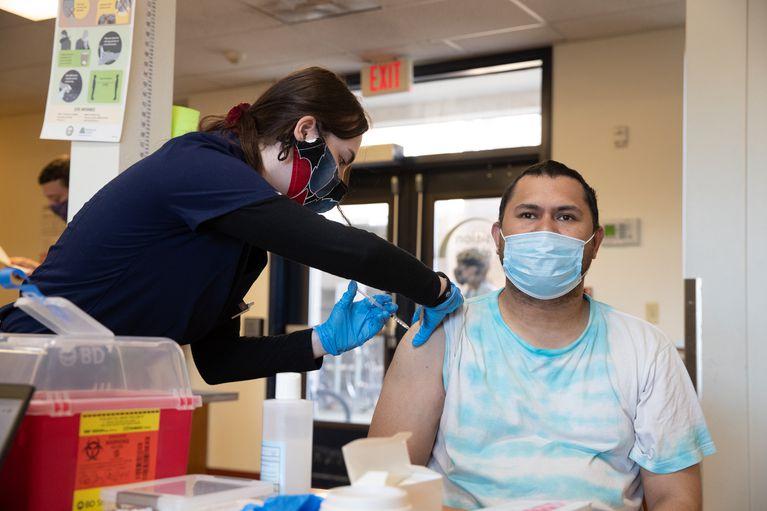
This article was originally published on Oregon Public Broadcasting.
In the spring of 2021, the state had a problem: Less than half of Oregon’s adult Hispanic population had been fully vaccinated against COVID-19.
In April, Rachael Banks, the director of public health at the Oregon Health Authority, told OPB the gap was an “unacceptable inequity.”
As late as June 1, 2021, only 45% of people identifying as Hispanic or Latino had received both of the first two shots, still considered the most effective at reducing the risk of severe illness or death. That lagged the state’s white population by 14 percentage points.
Today, that gap has shrunk to just 4 points. As of Sept. 2, 72% of the adult Hispanic population had received the first two doses of the vaccine, compared to 76% of the state’s adult white population. (The highest vaccination rates — all above 90% — are among people who identify as Native Hawaiian or Pacific Islander, Black and Asian.)
“I’m really excited to see that we have made it finally to that 80% [first-dose] goal that we set a year ago,” said Veronica Leonard, the director of health and wellness for the Portland-based Latino Network.
Hers was among the Latino-focused community organizations that called out state officials for creating eligibility guidelines in early 2021 that made it difficult for Latino people to get the early vaccines. It worked, she said. Officials at the Oregon Health Authority changed their strategies.
“I think they really owned up to the fact that there really was a lot more that could be done,” Leonard said. “They really made it more of a discussion amongst all of us on an equal playing field rather than them coming to us and kind of telling us, ‘This is our plan.’”
For example, community groups explained that holding walk-in vaccination clinics at places already providing trusted health services, rather than ones where patients had to schedule an appointment at mass vaccination sites, like at the Portland Convention Center, would likely be more successful. Changing where and how people in Latino communities could access the shots encouraged many more to get them, Leonard said.
“We were able to fund over 170 community based organizations — that can be culturally specific or faith-based institutions — and they were really able to address people from a holistic perspective,” Banks said. “So vaccine access, but also support with isolation and quarantine, or other foods or whatnot, particularly when folks were sick.”
Without the energy provided by organizations like the Latino Network, the Virginia Garcia Memorial Health Network, Centro Cultural, and dozens of similar nonprofits and churches across the state, Banks and Leonard said the gap in vaccination rates wouldn’t have closed.
“Ultimately, the reason why we reached this goal of 80% of the Latinx community vaccinated is because the Latinx community stepped up and overcame so many barriers to getting vaccinated,” Leonard said. “And that’s really why we’re where we are. We can’t do it without the community moving alongside with us.”
Despite the significant improvements in vaccine series completion among the state’s Hispanic and Latino population, large gaps remain in some counties. The gap between the white vaccination rate and the Hispanic vaccination rate remains larger than 20 percentage points in Coos, Sherman, Gilliam, Wheeler and Curry counties. Banks, with the Oregon Health Authority, said she was not yet sure why those gaps still exist, but is glad the data they’ve collected is granular enough to show them where there is still work to do.
Leonard, with the Latino Action Network, said their next public health task will be bringing up COVID-19 and standard childhood vaccination rates among Hispanic and Latino children.
“We learned a ton about what it takes to eliminate health inequities,” Banks said. “And that means elevating the voice of community and community-based organizations, working in partnership with local public health towards specific equity goals, and implementing culturally specific strategies.”